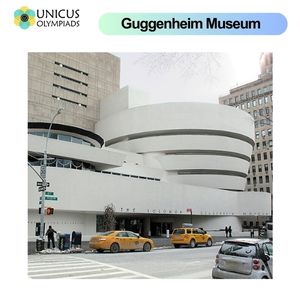

Modern architecture is characterized by innovative designs, the use of new materials, and creative approaches that break away from traditional architectural forms. Iconic modern buildings like the Louvre Pyramid, the Burj Khalifa, the Sydney Opera House, and the Guggenheim Museum have become symbols of architectural excellence and cultural significance. These structures not only serve functional purposes but also inspire awe through their bold designs and artistic expressions. This article explores some of the most famous and influential modern buildings, examining their architectural significance, design principles, and cultural impact.
The Louvre Pyramid, designed by architect I. M. Pei, stands as a modern symbol of the Louvre Museum in Paris, France. Completed in 1989, the pyramid is a striking contrast to the classical architecture of the Louvre and has become one of the most recognizable landmarks in the world. The glass and metal structure serves as the main entrance to the museum, offering a contemporary twist on the classical architecture of the surrounding buildings.

The Louvre Pyramid is composed of a large glass pyramid with a square base, surrounded by four smaller pyramids. The design was chosen as a solution to the Louvre’s overcrowded entrance and as a way to introduce a modern element to the classical museum complex. The pyramid’s transparency allows natural light to flood into the museum’s underground lobby, making the space feel open and inviting.
The Louvre Pyramid was initially met with controversy due to its stark contrast with the surrounding neoclassical architecture of the Louvre Museum. However, over time, it became a symbol of the museum's ability to adapt to the modern world while respecting its rich history. The pyramid’s design challenges traditional notions of classical architecture, and it has become an iconic example of how modern architecture can complement historical landmarks.
The Burj Khalifa in Dubai, United Arab Emirates, stands as the tallest building in the world, reaching a height of 828 meters (2,717 feet). Completed in 2010, this iconic skyscraper represents the epitome of modern engineering and architectural design. Designed by architect Adrian Smith of Skidmore, Owings & Merrill, the Burj Khalifa is a symbol of Dubai’s rapid growth and its aspiration to become a global metropolis.

The Burj Khalifa’s design is inspired by traditional Islamic architecture, with the building’s shape resembling a spiral minaret. The structure is composed of a series of setbacks, creating a tapering effect that gives the building its sleek, needle-like appearance. The Burj Khalifa is made from reinforced concrete and glass, with a unique construction process that allowed it to withstand high winds and extreme temperatures.
The Burj Khalifa is an engineering marvel, not just for its height but also for its advanced structural systems that enable it to withstand extreme forces. The building uses a reinforced concrete core, which provides stability and resistance to winds and seismic forces. The building’s use of cutting-edge materials and innovative construction techniques set new standards for skyscraper design.
The Sydney Opera House, located on the shores of Sydney Harbour in Australia, is one of the most recognizable and iconic buildings in the world. Designed by Danish architect Jørn Utzon, the opera house was completed in 1973 and is celebrated for its innovative design and unique architectural form. Its white, sail-like roof structures have become a symbol of Australia and a representation of modern architectural creativity.

The Sydney Opera House’s design was inspired by the natural beauty of Sydney Harbour, with Utzon’s idea of sail-like roofs evoking the image of a ship’s sails. The building consists of a series of large, interlocking shells, which create a sense of dynamic movement and flow. The structure is composed of reinforced concrete and features an impressive interior with acoustics designed for optimal sound quality for performances.
The Sydney Opera House is a symbol of Australia’s cultural identity and artistic achievements. Its design challenged traditional notions of architecture, particularly in terms of its curving, sail-like roof. The building's bold, unconventional form pushed the boundaries of architectural design and continues to inspire architects around the world.
The Guggenheim Museum in New York City, designed by Frank Lloyd Wright and completed in 1959, is one of the most revolutionary examples of modern museum architecture. Unlike traditional museum designs, which typically have rectangular rooms arranged in a linear sequence, the Guggenheim Museum features a spiral design that encourages visitors to move upward through the museum in a continuous, flowing path.

The Guggenheim’s unique design, with its spiraling, open-concept layout, was a departure from the traditional museum model. Wright envisioned a building that would allow visitors to view art in a continuous, unbroken flow, which was revolutionary at the time. The building’s organic curves, made from reinforced concrete, have become iconic and have influenced museum architecture globally.
The Guggenheim Museum changed the way museums are perceived, making them not only spaces to display art but also works of art themselves. Its unconventional design sparked debate about the relationship between architecture and the exhibition of art. Today, many museums around the world embrace modern architectural forms that reflect the spirit of creativity and innovation, much like the Guggenheim.